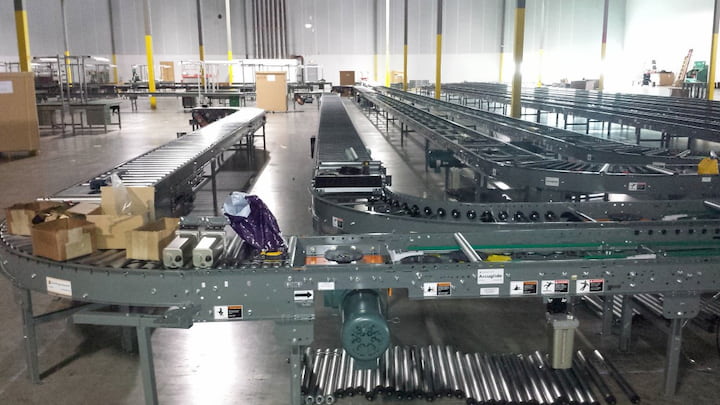The Build Phase of Your Material Handling Project

What’s the difference between success and failure during the Build Phase?
Answer: Project Management.
The best designed systems are most successful when they are implemented by the same team who envisioned the system concept. This end to end coordination between the design, controls and deployment of the solution results in a tightly coupled result which is seamless and fully realized.
Free Guide: Top Order Fulfillment KPI Indicators
This process is led by a project management team which ties together all of the various disciplines for a successful project which can include: consultancy, products, applications engineering, controls engineering, software, operations, facilities and construction.
Pitfall #1: Absence of a key point of contact that can coordinate all elements of the project will affect the overall alignment of the project team negatively. No project management = poor communication = missed dates and a painful implementation.
Like any large Build project it is important to have a single source of accountability. Having that one “go to” person is imperative for a smooth implementation. When decisions need to be made, it is best to have an onsite contact that takes ownership and has their finger on the pulse of the project. Whether it is a quick resolution or to touch base on the schedule this person is invaluable to providing the client a high comfort level that every detail is being monitored. Communication is key when there are many different vendors and moving parts which is often the case on job sites which can involve construction and integrated Warehouse Automation systems. Having that one person who can coordinate and be sure that all the pieces come together properly is essential to the success of the project.
When building your material handling system trust in your Integration Team. If you can not trust the project lead to build your system on time and on budget then you have been set up for failure. Project management is the key to a successful project, if there is poor communication, action items will be missed and the project schedule will be compromised. Knowing what to look for in a Project Management team is the key to a implementing on time and on budget.
Pitfall #2: Not having a Project Management team that is empowered to make decisions without multiple layers of management approval results in delays and most likely increased costs.
In fast paced Integration that need to be operational in a small time frame, the team needs to be nimble and have a clear leader. The importance of having a “go to” person was discussed in pitfall #1, project managers should be empowered to make decisions on site and do not require multiple layers of approval to make the right choices when the client’s best interests are concerned. When decisions can not be made in a timely manner, this will cause delays in the project schedule and at times these delays can be very costly. For example, if a piece of equipment has been delayed, it is the project manager’s job to find other tasks for installers, so time and money is not wasted. On site leadership will allow for a quicker turn around and ensure the project is implemented smoothly and stays on schedule.
Pitfall #3: Software deployment will fail if the preliminary ground work of defining functionality is skipped.
There is no short circuiting the proper design, specification and ongoing management of the software component required to effectively realize the overall system concept. By working with an Integrator to outline the various requirements of the software you will ensure the best end to end result with no gaps in functionality. For example, software companies can often over depend on algorithms to balance operations in an attempt to minimize “MHE” like Accumulation Conveyor and other components when in actuality they are necessary for the system to work. A software project manager will ensure that the system concept is fully realized by defining the software component with the added benefit of how the actual system was designed in the real world… not in “logic land” where everything works perfectly.
Conclusion:
Conveyco prides itself on being flexible throughout the process while maintaining accountability to the clients we serve. By empowering our project managers we place considerable trust in them which has been earned over time. We consistently have seen these professionals go above and beyond to ensure a project’s success or to address any issues that arise after the project’s go live. During the Build Phase it is important to align your software expectations with your system Design early on to prevent complications down the road. While proper execution during the implementation is paramount to a quality project, it is equally important to keep the system running for the entire project’s Lifecycle.






